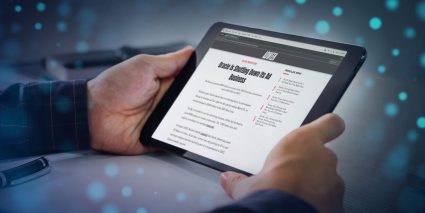Diversifying Nonprofit Donor Bases for Growth and Sustainability
Many nonprofits are looking to reach new cohorts of high-response donors to sustain their growth. Predictive modeling with a focus on donor base diversification can achieve that goal.

There are long-standing modeling methods that enable nonprofits and their partners to reach highly valuable and/or highly responsive new donors in their acquisition campaigns. These methods often involve using predictive algorithms to analyze data to identify the people who have spending and/or demographic similarities to a nonprofit’s best donors. Such similarities distinguish these prospect audiences as more likely than the average person to give to the organization.
Looking Beyond Look-alikes
But beyond finding look-alike audiences, nonprofit fundraisers are also asking questions about diversifying their prospect audiences:
- Is our donor base as broad as it could be?
- Are there people out there who are highly likely to give to our organization, but who have different demographic characteristics than those of our existing donor base?
- If these potential new donors are out there, how can we best reach them with our appeals?
For fundraisers asking these questions, diversity modeling can hold some of the answers. It is an effective method for reaching new universes of previously undiscovered donors with high propensities to give to an organization. Diversity modeling can take multiple forms, but it is essentially a method by which organizations discover the potential resonance of their appeal with different demographic groups. When successfully implemented, it creates a more varied, diverse donor base that spans a broader range of demographic categories.
For example, an organization with a traditionally older donor base might be looking to reach an audience of younger donors who are highly likely to give to their cause. Or a nonprofit that attracts mostly male donors could, with a data partner’s help, identify a pool of female prospects who are highly likely to donate, and vice versa.
How Does it Work?
Diversity modeling for nonprofit fundraising involves applying the same or similar predictive algorithms that an organization would use in their standard prospect modeling, but with a new end goal. Instead of identifying donors that share all characteristics with their highest-value existing donors, the goal is to identify donors with similar capacity and propensity scores, yet who have demographic characteristics that differ from the organization’s established donor profile. These characteristics typically include descriptive demographic information, with a focus on age, ethnicity, and gender. In more traditional modeling, these variables would be included only when they are shown to be statistically significant within the model. In diversity modeling, a data scientist would give special attention to ranking the diverse universe as a source of new prospects.
Asking the Right Questions
At Wiland, we sometimes hear fundraisers ask whether they should be using diversity modeling as part of their prospecting. In pursuit of that effort, organizations considering diversity modeling to grow their donor base should ask themselves these questions:
- Why do we want to acquire donors with a specific set of descriptive demographic traits?
- Is there pre-existing data or research that supports the hypothesis that donors within a set of descriptive demographic traits will become high-value, long-term donors for our organization?
- Could our appeal resonate with a particular demographic group, and are we willing to customize messaging to attract the more diverse audience if necessary?
- Is there a strategic organizational goal involved with diversifying our donor base?
- Are we willing to accept a period of reduced ROI while we invest in building a more diversified donor base?
These questions are crucial for an organization to answer before undertaking a diversity modeling effort, as diversity modeling can yield varying levels of initial success. Diversity modeling is largely a discovery tool that should be approached from a place of curiosity and openness. Organizations need to be willing to let the data do the talking, as diversity modeling tests can confirm—but also disprove—preconceived notions.
Investment is Required
One of the factors for consideration with diversity modeling is an organization’s willingness to invest in the program’s success. Diversity modeling requires research, planning, and testing—more so than with traditional modeling methodologies. The timeline of ROI is an important factor in diversity modeling programs, as there can be a trade-off between up-front discovery costs and the eventual value of acquiring a new, diverse set of donors. But if an organization is willing to commit to the effort, having a more diversified donor base could prove valuable for its long-term sustainability.
Nonprofits can often face additional barriers to diversifying their donor base, including finding significant data volume to use and trusting the reliability of sourced descriptive demographic data in the first place. Working with a qualified audience and data partner—one with vast, high-quality data resources whose data scientists can utilize myriad predictive modeling techniques—will mitigate such concerns.
Finding the Right Data Partner
The opportunities for diversifying a nonprofit’s donor base can take many promising directions. Whether they are seeking donors from different age groups or from among other demographic categories, nonprofits can turn to Wiland as their trusted data partner to diversify their acquisition efforts. Prospective donors across diverse demographic groups, with the propensity and capacity to give to specific nonprofits, are out there. And by utilizing the proper diversity modeling techniques, they can become high-value, repeat donors.
Tags: digital fundraising donor acquisition nonprofits predictive modeling




